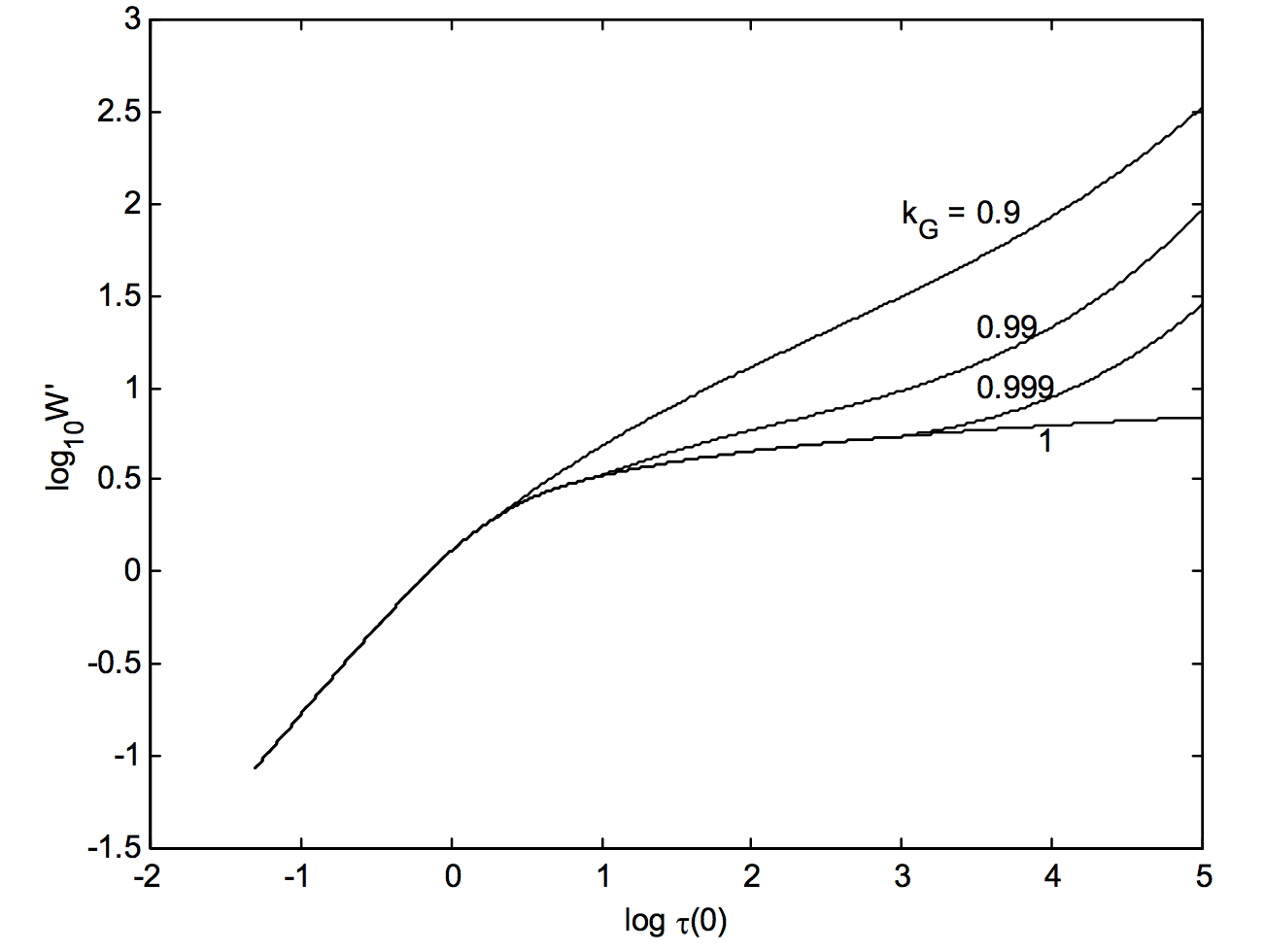11.6: Curve of Growth for Voigt Profiles
( \newcommand{\kernel}{\mathrm{null}\,}\)
Our next task is to construct curves of growth for Voigt profiles for different values of the ratio of the lorentzian and gaussian HWHMs, l/g, which is
lg=Γλ04πVm√ln2=Γλ0Vmπ√ln65536=Γλ034.841Vm,
or, better, for different values of the gaussian ratio kG=gl+g. These should look intermediate in appearance between figures XI.3 and 5.
The expression for the equivalent width in wavelength units is given by Equation 11.3.4:
W=2∫∞0[1−exp{−τ(x)}]dx.
combined with Equation 10.5.20
\tag{10.5.20}\label{10.5.20}\tau (x) = Cl \tau (0)\int_{-\infty}^\infty \frac{\text{exp}\left [ -(ξ-x)^2\ln 2/g^2\right ]}{ξ^2+l^2}\,dξ.
That is:
\tag{11.6.2}\label{11.6.2}W=2\int_0^\infty \left ( 1-\text{exp} \left \{ -Cl\tau(0)\int_{-\infty}^\infty \frac{\text{exp}\left [ -(ξ-x)^2\ln 2/g^2 \right ]}{ξ^2+l^2}dξ\right \}\right )\,dx.
Here
- x = \lambda − \lambda_0, l is the Lorentzian \text{HWHM} = \lambda_0^2\Gamma/(4\pi c) (where \Gamma may include a pressure-broadening contribution),
- g is the gaussian \text{HWHM} = V_\text{m}\lambda_0\sqrt{\ln 2} / c (where V_\text{m} may include a microturbulence contribution), and
- W is the equivalent width, all of dimension L.
The symbol ξ, also of dimension L, is a dummy variable, which disappears after the definite integration. \tau(0) is the optical thickness at the line centre. C is a dimensionless number given by Equation 10.5.23 and tabulated as a function of gaussian fraction in Chapter 10. The reader is urged to check the dimensions of Equation \ref{11.6.2} carefully. The integration of Equation \ref{11.6.2} is discussed in Appendix A.
Our aim is to calculate the equivalent width as a function of \tau(0) for different values of the gaussian fraction k_G = g/(l + g). What we find is as follows. Let W^\prime = W \sqrt{\ln 2 }/g; that is, W^\prime is the equivalent width expressed in units of g /\sqrt{ \ln 2}. For \tau(0) less than about 5, where the wings contribute relatively little to the equivalent width, we find that W^\prime is almost independent of the gaussian fraction. The difference in behaviour of the curve of growth for different profiles appears only for large values of \tau (0), when the wings assume a larger role. However, for any profile which is less gaussian than about k_G equal to about 0.9, the behaviour of the curve of growth (for \tau(0) > 5) mimics that for a lorentzian profile. For that reason I have drawn curves of growth in figure XI.6 only for k_G = 0.9, 0.99, 0.999\text{ and }1. This corresponds to l/g = 0.1111, 0.0101, 0.0010\text{ and }0, or to \Gamma \lambda_0 /V_m = 1.162, 0.1057, 0.0105\text{ and }0 respectively.

\text{FIGURE XI.6}


